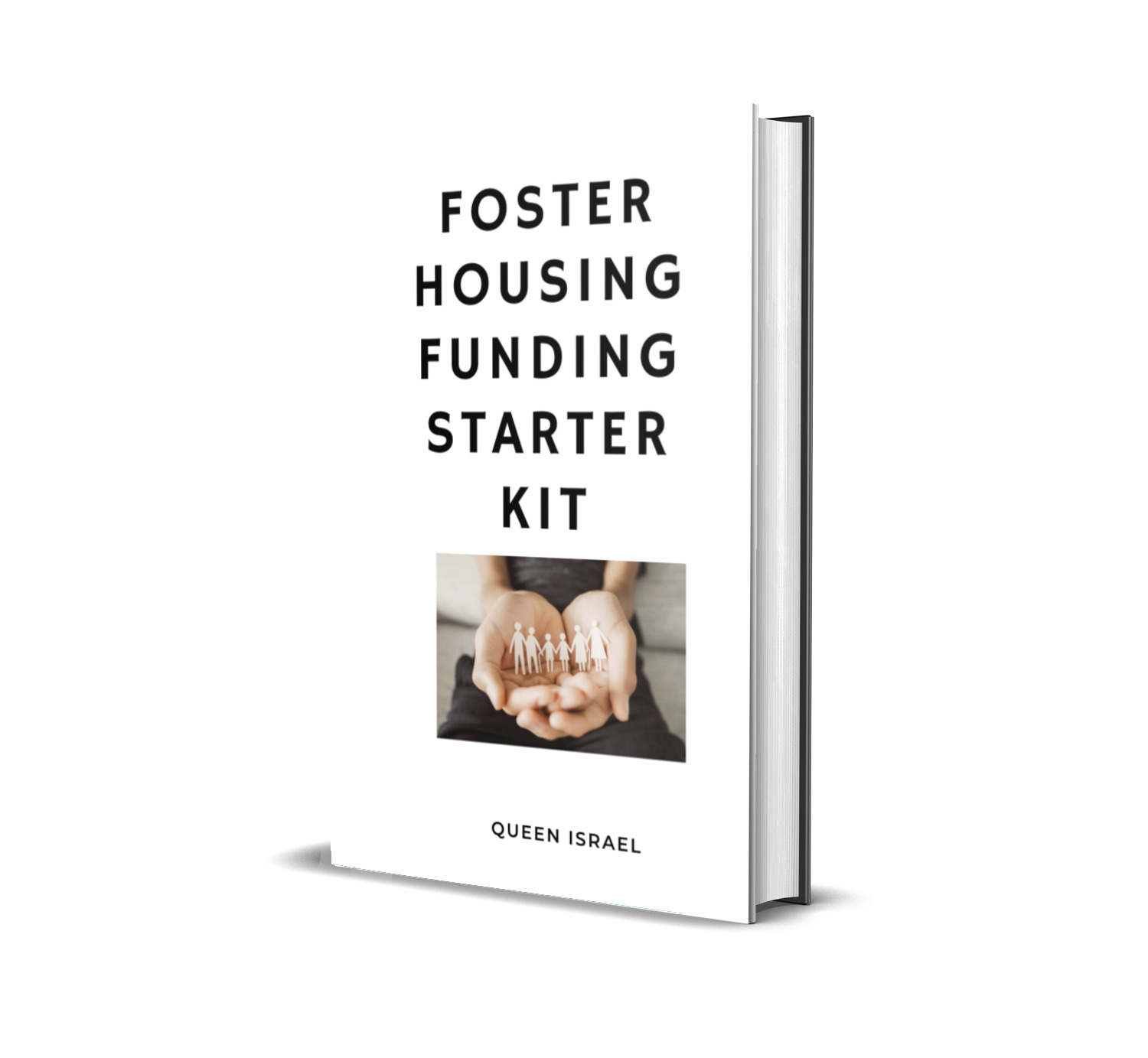Running an animal shelter can be incredibly rewarding, but it often comes with financial challenges. From providing food, medical care, and shelter for abandoned or stray animals to maintaining the facility and paying staff, the costs can add up quickly. That’s where animal shelter grants come in.
These grants provide vital funding for nonprofits and organizations dedicated to improving the lives of animals, and they can be a game-changer in ensuring your shelter thrives.
In this comprehensive guide, we’ll take you through everything you need to know about animal shelter grants, including how to find them, how to apply, and how to boost your chances of securing funding.
Whether you’re an experienced grant writer or a first-timer looking to get started, this post will walk you through the process step-by-step.
Why Animal Shelter Grants are Essential
Animal shelters are essential for the welfare of animals, especially those who are abandoned, mistreated, or in need of medical care. They provide a safe haven for animals and, in many cases, offer adoption services to give pets a second chance at a loving home. But with limited budgets and increasing demands, it can be hard for shelters to maintain operations without outside financial support.
Grants are an invaluable resource for nonprofit animal shelters. These funds can be used for a variety of purposes, including:
- Facility upgrades: Improve shelter conditions or expand your capacity to take in more animals.
- Medical care: Provide health services like vaccinations, surgeries, and emergency care.
- Community outreach: Fund adoption programs, educational workshops, and other outreach efforts to encourage animal welfare.
- Operational costs: Cover expenses like staffing, utilities, food, and supplies.
Importance of Grants for Animal Shelters
Animal shelters often operate on tight budgets, relying heavily on donations and volunteer work. However, the consistent demand for animal care services requires a stable and predictable source of funding.
Grants can fill this gap by providing dedicated funds that can be allocated to specific projects or general operational costs.
Key Benefits of Animal Shelter Grants:
- Financial Stability: Grants can provide a steady stream of income that helps shelters plan for the future and sustain their operations.
- Project Funding: Grants can be earmarked for specific projects, such as building renovations, new medical equipment, or launching a spay/neuter program.
- Expansion Opportunities: With grant funding, shelters can expand their services, take in more animals, and reach a larger community.
- Enhanced Services: Grants can enable shelters to offer additional services like behavior training, foster care programs, and community education initiatives.
- Reputation Building: Securing grants from reputable organizations can enhance the shelter’s credibility and attract more donors and volunteers.
Where to Find Animal Shelter Grants
There are several places to look for animal shelter grants, each offering different types of funding opportunities. Some of the best places to start your search include:
1. Government Grants
Government funding is one of the most reliable sources of grants for animal shelters. Several federal, state, and local government programs offer funding specifically for animal welfare projects. For example:
- The ASPCA Grants: The American Society for the Prevention of Cruelty to Animals (ASPCA) provides grants to nonprofit animal welfare organizations. Their funding opportunities range from grants for emergency medical services to grant programs that support shelter operations.
ASPCA Grants - The Petfinder Foundation: This nonprofit organization offers grants to animal shelters and rescue groups for medical care, transport, and adoption programs. Petfinder Foundation Grants
- The USDA: The United States Department of Agriculture offers a variety of grants for animal shelters involved in agricultural or food safety projects. USDA Grants
- Federal Emergency Management Agency (FEMA): In cases of natural disasters, FEMA may provide grants to animal shelters to help them respond to emergencies and care for displaced animals. FEMA Animal Grants
2. Private Foundations
Numerous private foundations support animal welfare efforts through grant-making. Some examples of animal welfare-focused foundations include:
- The Maddie’s Fund: A national family foundation dedicated to animal welfare, Maddie’s Fund offers grants for animal shelters and rescue groups focused on reducing euthanasia rates and increasing adoptions. Maddie’s Fund Grants
- The Humane Society of the United States (HSUS): HSUS offers various funding programs to help animal shelters and rescues enhance their operations and expand outreach efforts. HSUS Grant Opportunities
- The Petco Foundation: The Petco Foundation provides grants to animal shelters for adoption programs, spay/neuter initiatives, and community outreach projects. Petco Foundation Grants
- The Banfield Foundation: The Banfield Foundation supports shelters that improve the well-being of animals through veterinary care, sheltering, and adoption services. Banfield Foundation Grants
3. Corporations and Corporate Foundations
Large corporations also support animal welfare through philanthropic grants. Many companies, especially those in pet care, food, and pharmaceuticals, have corporate social responsibility (CSR) programs that fund animal shelter projects. For example:
- PetSmart Charities: PetSmart Charities funds adoption events, spay/neuter services, and community outreach programs to support animal shelters across the country. PetSmart Charities Grants
- Walmart Foundation: The Walmart Foundation offers grants that can be used for community development projects, including those focused on animal welfare. Walmart Foundation Grants
- Bayer Animal Health: Bayer provides grants for projects that enhance animal health and welfare, including shelter improvements and medical care programs. Bayer Animal Health Grants
4. Crowdfunding Platforms
While not technically a “grant,” crowdfunding can be an effective way to raise money for your animal shelter. Platforms like GoFundMe and Kickstarter allow you to reach out to your community for small donations that add up to large amounts over time. Some grants, like those from the Petfinder Foundation, can even match crowdfunding efforts to double your funding!
- GoFundMe: Reach out to your supporters to fundraise for specific shelter needs. GoFundMe
- Kickstarter: Launch projects aimed at improving shelter facilities or launching new programs. Kickstarter
- Indiegogo: Use Indiegogo to raise funds for innovative shelter projects or community outreach programs. Indiegogo
5. Local Community Grants
Don’t overlook local opportunities! Many communities have their own grant programs designed to support local nonprofits, including animal shelters. Check with your city or county government, local businesses, and community foundations for available funding opportunities.
- Local Business Grants: Some local businesses offer grants to support community initiatives, including animal welfare projects.
- Community Foundations: Organizations like the Local Community Foundation often have grant programs for local nonprofits.
How to Apply for Animal Shelter Grants
Once you’ve identified potential grants, the next step is to apply. The application process can vary depending on the funder, but most grants require the following:
- Eligibility Check: Ensure your animal shelter is eligible for the grant. For example, some grants may only support registered 501(c)(3) nonprofits, while others might require a focus on specific types of animals (such as cats or dogs).
- Grant Proposal: This is the meat of your application, where you’ll describe your shelter’s mission, the problem you’re solving, how you’ll use the funds, and how the funding will benefit your community. Be clear, concise, and use data to back up your claims. Include:
- Executive Summary: A brief overview of your shelter and the project for which you’re seeking funding.
- Detailed Project Description: Explain the need, the objectives, the activities you’ll undertake, and the expected outcomes.
- Budget Breakdown: Provide a detailed budget that outlines how every dollar will be spent.
- Data and Outcomes: Include any relevant data or outcomes from previous projects to demonstrate your shelter’s impact.
- Supporting Documents: Many grant applications will require additional documents such as tax returns, proof of nonprofit status, and letters of recommendation.
- Follow the Guidelines: Every grant will have specific requirements and guidelines. Make sure to follow these to the letter, as failure to do so can result in your application being disqualified.
Best Practices for Writing a Winning Grant Proposal
Securing a grant can be highly competitive, so it’s crucial to make your application stand out. Here are some best practices to help you write a winning grant proposal:
1. Tell a Compelling Story
Don’t just present facts; tell a compelling story that connects emotionally with the grant reviewer. Explain why your shelter’s work is essential and how their funding will make a real difference.
- Personal Stories: Share success stories of animals that have been rescued and adopted.
- Mission-Driven Narrative: Clearly articulate your shelter’s mission and vision.
- Emotional Appeal: Highlight the emotional impact of your work on the community and the animals.
2. Be Specific and Clear
Provide
details about how the funds will be used, the number of animals your shelter will impact, and the measurable outcomes you expect.
- Objectives and Goals: Clearly define your project’s objectives and goals.
- SMART Goals: Use Specific, Measurable, Achievable, Relevant, and Time-bound (SMART) goals to outline your project’s success criteria.
- Detailed Activities: Describe the specific activities you’ll undertake to achieve your goals.
3. Show Community Support
Demonstrating community involvement and support for your shelter can strengthen your application. Provide letters of support from local organizations, community leaders, or individuals who can vouch for your shelter’s work.
- Partnerships: Highlight partnerships with local businesses, schools, or other nonprofits.
- Volunteer Support: Showcase the number and dedication of your volunteers.
- Community Impact: Explain how your shelter benefits the local community.
4. Create a Realistic and Detailed Budget
A clear and realistic budget shows funders that you’ve thought through how to spend the grant money efficiently. Break down each expense and align it with your project goals.
- Line-Item Budget: Include a detailed line-item budget that outlines each expense category.
- Justification: Provide a brief justification for each budget item, explaining why it’s necessary for the project.
- In-Kind Contributions: Highlight any in-kind contributions or matching funds you’re receiving.
5. Use Data and Evidence
Support your proposal with data and evidence that demonstrate the need for your project and the effectiveness of your shelter’s programs.
- Statistics: Use relevant statistics to highlight the scope of the problem your shelter addresses.
- Research: Reference studies or reports that support your project’s approach.
- Impact Metrics: Include metrics that show the impact of your shelter’s work, such as the number of animals rescued, vaccinated, or adopted.
6. Follow Instructions Carefully
Every grant application has specific instructions and requirements. Make sure you follow them meticulously to avoid disqualification.
- Format Requirements: Adhere to any formatting guidelines, such as font size, margins, and page limits.
- Submission Deadlines: Submit your application before the deadline to avoid any last-minute issues.
- Required Documents: Ensure all required documents are included and properly formatted.
Tips to Increase Your Chances of Success
Securing a grant requires careful planning and attention to detail. Here are some tips to enhance your chances of success:
1. Start Early
Grant deadlines can sneak up on you. Give yourself plenty of time to research, prepare, and submit your application. Starting early allows you to gather all necessary documents, seek feedback, and make any necessary revisions.
2. Request Feedback
Before submitting your application, have someone else—preferably someone with experience—review it. Fresh eyes can catch mistakes and offer valuable suggestions to improve your proposal.
3. Track Your Success
Once you secure a grant, track your progress and outcomes. Demonstrating that you met your goals will make it easier to apply for future funding. Keep detailed records of how funds are used and the impact they have on your shelter.
4. Build Relationships with Funders
Developing relationships with potential funders can increase your chances of securing grants. Attend events, network with grant officers, and keep them informed about your shelter’s progress and successes.
5. Diversify Your Funding Sources
Relying on a single source of funding can be risky. Diversify your funding sources by applying for multiple grants, seeking donations, and exploring other fundraising avenues like crowdfunding and events.
6. Stay Organized
Keep track of grant deadlines, requirements, and submission dates using a spreadsheet or project management tool. Staying organized ensures you don’t miss any important deadlines or overlook any necessary components of your application.
Data & Statistics on Animal Shelters
Understanding the landscape of animal shelters and their needs can help you craft a more compelling grant proposal. Here are some key statistics and data points:
- Adoption Rates: In the U.S., over 3.1 million animals are adopted each year, but more than 3.2 million animals enter shelters annually. This indicates a consistent demand for shelter services.
- Euthanasia Rates: According to the Humane Society of the United States (HSUS), approximately 1.5 million animals are euthanized each year in U.S. shelters. Grants can help shelters implement programs to reduce these numbers through spay/neuter initiatives and adoption drives.
- ASPCA Findings: The ASPCA reports that nearly 6.5 million companion animals enter U.S. animal shelters every year. This high number underscores the ongoing need for support and funding.
- Shelter Operational Costs: On average, running a medium-sized animal shelter costs between $200,000 and $500,000 annually. Grants can help cover these operational costs, ensuring that shelters can continue their vital work.
- Medical Care Needs: Veterinary care is one of the largest expenses for animal shelters. Grants can provide funding for essential medical services, including vaccinations, surgeries, and emergency care.
- Community Impact: Animal shelters also contribute to public health by controlling the population of stray animals and preventing the spread of diseases. Grants can support these public health initiatives, benefiting the entire community.
Success Stories: How Grants Have Transformed Animal Shelters
To illustrate the impact of grants, here are a few success stories of animal shelters that secured funding and made significant improvements:
1. The Happy Paws Shelter
The Happy Paws Shelter in Austin, Texas, received a $50,000 grant from the Petco Foundation to upgrade their medical facilities. With the new equipment, they were able to provide better veterinary care, reduce the time animals spent in recovery, and increase their adoption rates by 20%. The grant also allowed them to hire additional veterinary staff, further enhancing their capacity to care for more animals.
2. Furry Friends Rescue
Furry Friends Rescue in Portland, Oregon, secured a $30,000 grant from the Maddie’s Fund to launch a community outreach program focused on educating the public about responsible pet ownership and the importance of spaying/neutering. The program included workshops, school visits, and a social media campaign that resulted in a 15% increase in spay/neuter surgeries and a significant reduction in the number of stray animals in the area.
3. Safe Haven Animal Shelter
Safe Haven Animal Shelter in Miami, Florida, received a $100,000 grant from the ASPCA to expand their facilities. The grant funded the construction of additional kennels, a new adoption center, and a dedicated area for rehabilitating animals recovering from abuse. As a result, the shelter was able to double its intake capacity and increase its adoption rate by 25%, providing more animals with safe and loving homes.
Overcoming Common Challenges in Grant Writing
Grant writing can be daunting, especially for those new to the process. Here are some common challenges and how to overcome them:
1. Limited Time and Resources
Many animal shelters operate with limited staff and resources, making it difficult to dedicate time to grant writing. To overcome this, consider:
- Hiring a Grant Writer: If your budget allows, hiring a professional grant writer can significantly improve your chances of success.
- Training Staff: Invest in training your staff or volunteers in grant writing techniques.
- Using Templates and Tools: Utilize grant writing templates and tools to streamline the process and save time.
2. Lack of Experience
If you’re new to grant writing, the process can be overwhelming. To build your skills:
- Attend Workshops: Participate in grant writing workshops and seminars to learn best practices.
- Join Grant Writing Associations: Organizations like the Grant Professionals Association offer resources and networking opportunities.
- Utilize Online Resources: There are numerous online guides and courses available to help you develop your grant writing skills.
3. Competition for Funds
With many organizations vying for the same grants, competition can be fierce. To stand out:
- Highlight Your Unique Value Proposition: Clearly articulate what sets your shelter apart and why your project deserves funding.
- Build Relationships with Funders: Engage with potential funders early and keep them updated on your shelter’s progress and successes.
- Demonstrate Impact: Use data and success stories to show the tangible impact of your shelter’s work.
4. Meeting Grant Requirements
Each grant has specific requirements and guidelines that must be followed precisely. To ensure compliance:
- Read Instructions Carefully: Thoroughly read and understand the grant application instructions before starting.
- Create a Checklist: Develop a checklist of all required components and ensure each is included in your application.
- Seek Clarification: If any part of the application is unclear, don’t hesitate to contact the grantor for clarification.
Leveraging Technology in Grant Writing
Technology can greatly enhance your grant writing efforts by improving efficiency and organization. Here are some ways to leverage technology:
1. Grant Management Software
Using grant management software can help you track deadlines, manage documents, and streamline the application process. Some popular options include:
- GrantHub: A user-friendly platform that helps manage grant applications and deadlines. GrantHub
- Foundant: Comprehensive grant management software designed for nonprofits. Foundant
- Fluxx: A flexible grant management system that offers customizable workflows. Fluxx
2. Collaborative Tools
Collaborative tools like Google Workspace or Microsoft Office 365 enable your team to work together seamlessly on grant proposals, even if they’re working remotely.
- Google Docs: Allows multiple users to edit and comment on documents in real-time. Google Docs
- Microsoft Teams: Facilitates communication and collaboration through chat, video calls, and file sharing. Microsoft Teams
3. Research Tools
Utilize research tools to find and evaluate grant opportunities more effectively.
- Grants.gov: The most comprehensive database of federal grants. Grants.gov
- Foundation Directory Online: A database of private foundations and grant opportunities. Foundation Directory Online
4. Data Management
Efficient data management ensures that your shelter can track its impact and report effectively to funders.
- CRM Systems: Customer Relationship Management (CRM) systems like Salesforce Nonprofit Cloud help manage donor relationships and track interactions. Salesforce Nonprofit Cloud
- Data Analysis Tools: Tools like Tableau or Google Data Studio can help visualize your shelter’s data and demonstrate impact in your grant proposals. Tableau Google Data Studio
Building a Strong Grant Proposal: Step-by-Step
Creating a strong grant proposal involves several key steps. Here’s a step-by-step guide to help you craft a compelling application:
Step 1: Research and Identify Potential Grants
Start by researching grants that align with your shelter’s mission and needs. Look for grants that specifically support animal welfare, shelter operations, or your particular project.
- Match Your Needs with Grant Objectives: Ensure the grant’s objectives align with your project goals.
- Check Eligibility Requirements: Verify that your shelter meets all eligibility criteria before applying.
Step 2: Develop a Project Plan
Create a detailed project plan that outlines what you aim to achieve with the grant funding.
- Define Your Project: Clearly define the scope and objectives of your project.
- Set SMART Goals: Establish Specific, Measurable, Achievable, Relevant, and Time-bound goals.
- Plan Activities: Outline the specific activities you will undertake to achieve your goals.
Step 3: Gather Necessary Documents
Collect all required documents before starting your application to ensure a smooth process.
- Organizational Documents: Include your nonprofit status, tax returns, and bylaws.
- Financial Statements: Provide recent financial statements to demonstrate your shelter’s financial health.
- Letters of Support: Obtain letters from partners, community leaders, or other stakeholders supporting your project.
Step 4: Write the Grant Proposal
Craft a well-organized and persuasive grant proposal that effectively communicates your project’s value and impact.
- Executive Summary: Provide a concise overview of your shelter and the project for which you’re seeking funding.
- Problem Statement: Clearly articulate the problem your project addresses and why it’s important.
- Project Objectives: Define the specific objectives your project aims to achieve.
- Methodology: Describe the methods and activities you will use to achieve your objectives.
- Evaluation Plan: Explain how you will measure the success of your project.
- Budget: Present a detailed and realistic budget that aligns with your project goals.
Step 5: Review and Edit
Before submitting your proposal, thoroughly review and edit it to ensure clarity, accuracy, and compliance with grant guidelines.
- Proofread: Check for spelling and grammatical errors.
- Ensure Compliance: Make sure your proposal follows all grant guidelines and requirements.
- Seek Feedback: Have someone else review your proposal to provide feedback and catch any mistakes you might have missed.
Step 6: Submit the Application
Submit your grant application before the deadline, ensuring all required documents are included and properly formatted.
- Follow Submission Instructions: Adhere to the grantor’s submission instructions, whether it’s via an online portal, email, or mail.
- Confirm Receipt: If possible, confirm that your application has been received and is complete.
Common Mistakes to Avoid in Grant Writing
Avoiding common mistakes can increase your chances of securing a grant. Here are some pitfalls to watch out for:
1. Not Following Instructions
Failing to adhere to the grant guidelines can result in immediate disqualification. Always read the instructions carefully and ensure your application meets all requirements.
2. Being Vague or Generic
A successful grant proposal needs to be specific and tailored to the funder’s interests. Avoid vague statements and provide detailed information about your project and its impact.
3. Poor Budget Planning
An unrealistic or unclear budget can undermine your proposal. Ensure your budget is detailed, justified, and aligns with your project’s objectives.
4. Lack of Evidence
Proposals that lack data or evidence to support their claims are less likely to be successful. Use statistics, research, and success stories to back up your proposal.
5. Ignoring the Reviewer’s Perspective
Remember that grant reviewers are looking for clear, concise, and compelling proposals. Make your application easy to read and understand, highlighting the most important information.
Leveraging Success Stories and Testimonials
Incorporating success stories and testimonials into your grant proposal can significantly enhance its impact. These narratives provide tangible evidence of your shelter’s effectiveness and the real-world benefits of your programs.
1. Success Stories
Share detailed stories of individual animals that have been rescued, rehabilitated, and adopted thanks to your shelter’s efforts. Highlight the challenges they faced, the care they received, and the positive outcomes achieved.
Example: “Bella, a neglected dog found on the streets, was brought to our shelter in critical condition. With the help of our dedicated veterinary team, Bella received the necessary medical care and rehabilitation. Today, she is a healthy, happy dog enjoying her new home with a loving family. Bella’s story is just one of many that illustrate the life-changing impact of our shelter’s work.”
2. Testimonials
Include testimonials from adopters, volunteers, donors, and community members who can attest to the value and effectiveness of your shelter.
Example: “Volunteering at Safe Haven Animal Shelter has been one of the most rewarding experiences of my life. Seeing the transformation of animals like Bella from frightened and injured to joyful and loved is truly inspiring.” – Jane Doe, Volunteer
Utilizing Visuals and Multimedia
Enhancing your grant proposal with visuals and multimedia can make it more engaging and compelling. Here are some ways to incorporate visuals:
1. Photos
Include high-quality photos of your shelter, the animals in your care, and your team in action. Visuals help create a personal connection and illustrate the impact of your work.
2. Infographics
Use infographics to present data and statistics in an easily digestible format. Infographics can highlight key metrics, such as the number of animals rescued, vaccinated, and adopted.
3. Videos
If possible, include links to videos that showcase your shelter’s operations, success stories, and community impact. Videos provide a dynamic way to convey your message and engage funders.
Building a Strong Online Presence
A strong online presence can support your grant writing efforts by demonstrating your shelter’s credibility and reach. Here are some ways to build and enhance your online presence:
1. Professional Website
Ensure your shelter has a professional, user-friendly website that clearly communicates your mission, services, and impact. Include sections for donating, volunteering, and adopting animals.
- Example: Best Friends Animal Society
2. Social Media
Active social media profiles on platforms like Facebook, Instagram, and Twitter can help you engage with your community, share success stories, and promote your grant-funded projects.
- Example: ASPCA on Facebook
3. Online Reviews and Testimonials
Encourage supporters to leave positive reviews and testimonials on platforms like Google, Yelp, and your website. Positive reviews enhance your shelter’s reputation and credibility.
Measuring and Reporting Impact
Grant funders want to see that their money is making a difference. Measuring and reporting your impact is crucial for current and future funding opportunities.
1. Define Metrics
Identify the key metrics that demonstrate your shelter’s impact, such as the number of animals rescued, vaccinated, adopted, and returned to the wild.
2. Collect Data
Regularly collect data on your shelter’s activities and outcomes. Use software tools and databases to track and manage this information efficiently.
3. Analyze and Report
Analyze the data to identify trends and assess the effectiveness of your programs. Provide clear and concise reports to funders, highlighting your achievements and the impact of their support.
Example Report Section: “In the past year, our shelter rescued 2,500 animals, provided medical care to 1,800 animals, and facilitated the adoption of 2,200 animals. Our spay/neuter program reduced the local stray population by 15%, demonstrating the effectiveness of our community outreach efforts.”
Leveraging Partnerships and Collaborations
Building partnerships and collaborations can enhance your grant proposals by showing funders that you have a strong support network and the capacity to execute your projects effectively.
1. Partner with Local Businesses
Collaborate with local businesses for funding, in-kind donations, or volunteer support. Businesses may be willing to sponsor events, donate supplies, or provide financial support for specific projects.
2. Collaborate with Other Nonprofits
Partner with other nonprofits to leverage resources, share expertise, and create joint programs. Collaborations can strengthen your proposals by demonstrating a unified effort to address common goals.
3. Engage with Community Leaders
Involve community leaders and influencers in your initiatives. Their support can enhance your credibility and help mobilize additional resources and support for your shelter.
Sustainability and Future Planning
Funders are increasingly interested in the sustainability of the projects they support. Demonstrating that your shelter has a plan for long-term sustainability can make your grant proposals more attractive.
1. Develop a Sustainability Plan
Create a plan that outlines how your shelter will maintain its operations and programs beyond the grant period. Include strategies for diversifying funding sources, building reserves, and reducing costs.
2. Show Long-Term Impact
Emphasize the long-term benefits and sustainability of your projects. Explain how the grant funding will create lasting change and contribute to the ongoing success of your shelter.
3. Plan for Growth
Outline how your shelter plans to grow and expand its services in the future. Funders are more likely to support projects that have the potential for scalability and increased impact over time.
Conclusion
Animal shelter grants are an essential lifeline for nonprofit shelters working tirelessly to care for animals in need. By following the steps outlined in this comprehensive guide, you can enhance your chances of securing funding and ensure that your shelter remains a safe haven for abandoned and mistreated animals. Whether you are applying for government grants, private foundation funding, or corporate support, the key is to be thorough, detailed, and passionate about the work you’re doing.
Remember: Grant writing is a skill that improves with practice and persistence. Don’t be discouraged by setbacks; instead, use each application as a learning opportunity to refine your approach and strengthen your proposals.
If you want to maximize your success rates with grant applications, be sure to subscribe to the Grant Writing Academy Newsletter.
You’ll gain access to tips, strategies, templates, and tools that will enhance your grant writing efforts and increase your chances of securing funding for your animal shelter or other nonprofit projects.
Subscribe today and take the next step towards securing the vital funding your animal shelter needs to thrive and make a difference in the lives of countless animals.
Subscribe to Grant Writing Academy Newsletter
Additional Resources and Support
a) Expand Your Knowledge
The grant writing field is always evolving. Keep learning and improving your skills to stay competitive.
Recommended Resources:
- Request for Proposal Success: How to Write Proposals That Win: Learn the techniques and strategies to create standout proposals.
- Tech Startup Funding Secrets: Navigating Grants for Maximum Growth: Perfect for those in the tech sector looking to leverage grants for scaling.
- Grant Proposal Guide for Environmental Projects: Tailored for environmental initiatives seeking to secure impactful funding.
- The Ultimate Guide to Federal Grant Applications: Techniques for Success: Master the complexities of federal grants with actionable insights.
Explore More Books Here
b) Invest in Expert Guidance
Join one of our mentorship programs for tailored advice and support:
Mentorship Programs:
- 3-Month Mentorship: The Foundation Builder: A short-term plan to refine your grant writing skills and win your first (or next) grant.
- 6-Month Mentorship: The Proposal Pro: Dive deeper into strategies, proposal reviews, and funding plans.
- 1-Year Mentorship: The Funding Champion: Build long-term success with comprehensive guidance, unlimited reviews, and exclusive resources.
C) Book a One-on-One Consultation
Sometimes you just need personalized advice to tackle challenges or fine-tune your strategy. Let’s work together to solve your unique grant writing challenges.
Book a Consultation Call Here
Frequently Asked Questions (FAQs)
1. What are the most common types of grants for animal shelters? The most common types include operational grants, project-specific grants, emergency funding, and capacity-building grants. Each type supports different aspects of shelter operations, from daily expenses to specific initiatives like medical care or community outreach.
2. How long does the grant application process typically take? The grant application process can vary widely depending on the funder. It can take anywhere from a few weeks to several months from application submission to receiving the funds. It’s essential to plan ahead and start the process early.
3. Can small animal shelters apply for grants? Yes, many grants are specifically designed for small and emerging animal shelters. Look for grants that focus on community-based initiatives or have flexible funding criteria that accommodate organizations of all sizes.
4. What should I include in a grant proposal for an animal shelter? A grant proposal should include an executive summary, problem statement, project objectives, methodology, evaluation plan, detailed budget, and supporting documents such as letters of support and financial statements.
5. How can I make my grant proposal stand out? To make your proposal stand out, tell a compelling story, use clear and specific language, provide strong evidence and data, demonstrate community support, and ensure your proposal is well-organized and free of errors.
By leveraging the information and strategies outlined in this guide, you can effectively navigate the grant writing process and secure the funding needed to support and expand your animal shelter’s vital work.
Remember, persistence and dedication are key – keep refining your approach, seeking feedback, and exploring new funding opportunities to ensure your shelter’s continued success.







Unquestionably believe that which you stated. Your favorite justification seemed to be on the web the simplest thing to be aware of.
I say to you, I certainly get irked while people consider worries that
they plainly do not know about. You managed to hit the nail upon the top as well as defined out the whole thing without having side effect , people can take a signal.
Will likely be back to get more. Thanks